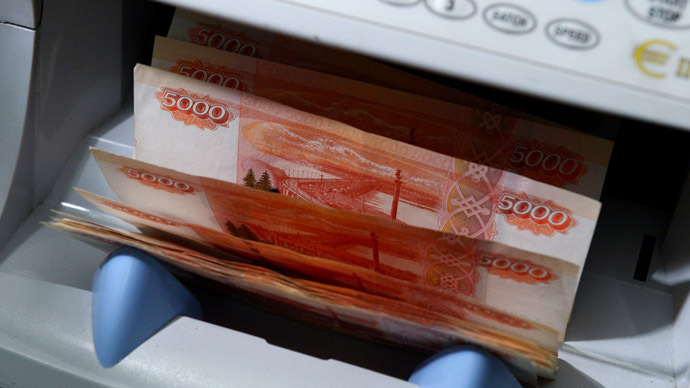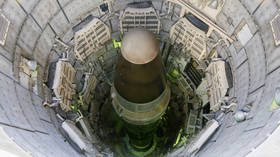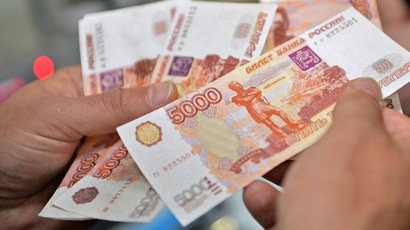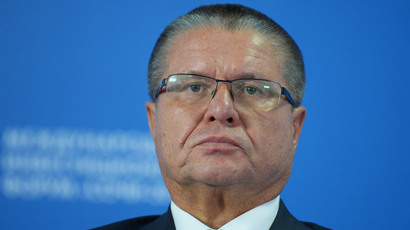Good fundamentals make ruble ‘stable’ currency - Russian Central Bank

Russia’s currency has taken a significant 20 percent plunge this year against the dollar and euro, but analysts are confident that Russia’s sturdy stash of foreign reserves and miniscule external debt make the ruble one of the ‘most stable’ currencies.
Russia’s vast gold and foreign currency reserves will help weather the ruble’s rough patch. At more than $450 billion, they are the third largest reserves in the world.
"We believe that the fundamental factors that determine the value of our currency were unchanged. Fundamentally the balance of our budget, the absence of significant external debt of our state. Precisely because of this ruble is one of the most stable currencies," Deputy Chairman of the Bank of Russia, Mikhail Sukhov, told TASS Wednesday.
The Central Bank has already spent more than $10 billion in October to stymie the ruble’s fall, and $50 billion since the beginning of the year. However, the bank has signaled it won’t continue to prop up the ruble with billions more.
READ MORE: 6 useful things you need to know about the rapid descent of Russian ruble
The ruble has lost more 20 percent against the dollar since January, which caused a flurry of panic over the future of the Russian economy, especially amid political risks brought on by the conflict in Ukraine, sanctions, ISIS, and lower oil prices.
“Today, pricing on foreign exchange markets have significant ‘political risk’, the impact cannot be ignored. However, there are more basic reasons for the weakening ruble; appreciation of the dollar against key currencies on world markets, a strengthening US economy, and the expectation of a policy shift at the US Federal Reserve, lower oil prices, and local factors such as inflation and high foreign debt payments,” Alexander Ovchinnikov , chief analyst at RusRating, told RT.
Ovchinnikov says not to panic, especially since Russia has put away enough capital for a financial storm.
Russia’s foreign debt is slightly less than $721 billion as of July 2014, the most recent data available on the Central Bank’s website. The reason is simple; Russia doesn’t issue very many bonds on international capital markets.
The US, by comparison, has more than $17.7 trillion in external debt, which makes its currency vulnerable should any big bond holder decide to cash in and suddenly sell.
Sanction end in sight
Russia’s banks are facing a dollar crunch being locked out of foreign capital markets due to sanctions. The Central Bank predicts that the peak of foreign debt payments will occur in the second quarter of 2015, when in their best case scenario, the sanctions will already be lifted. Then Russian banks won’t have any problems paying off their external debt.
Ovchinnikov forecasts that by this time, the “political premium” will be gone, and Russia’s domestic market will be under less pressure.
“In the event that foreign markets remained closed in 2015, inflation pressure and the Central Bank’s transition to a free-floating exchange rate on foreign markets will support further weakening of the ruble.”














